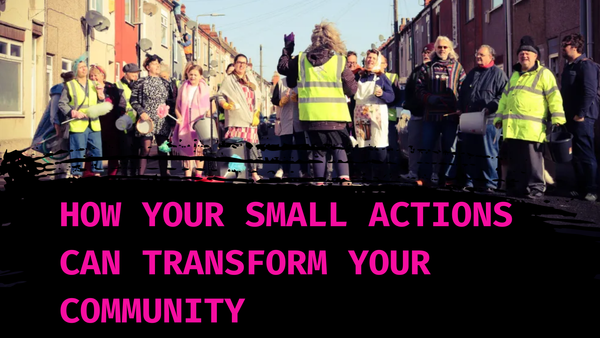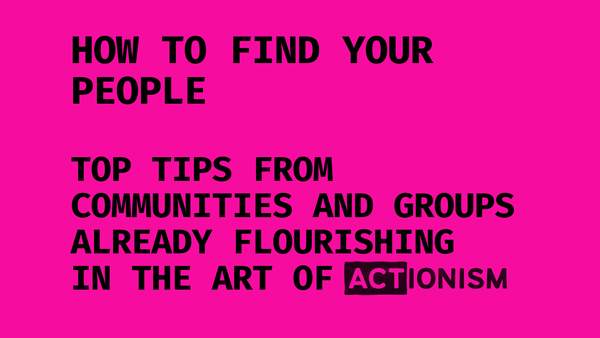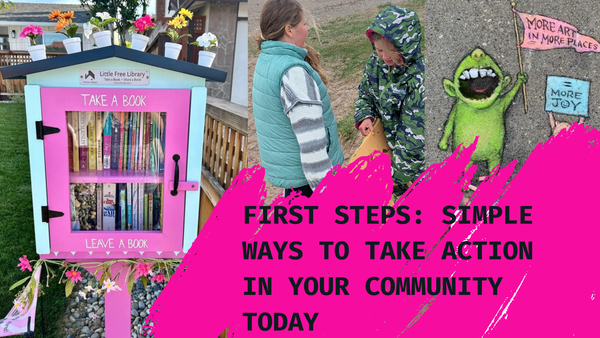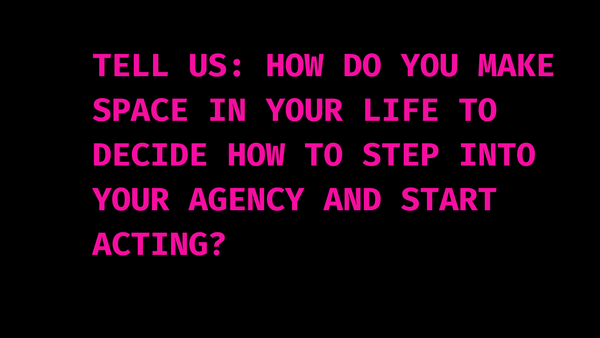What if all documentary films were screened like the Actionism doc - at community screenings?
The future of documentary impact isn't just about reaching more people—it's about empowering communities to act together. And the answer can be found in Social Cinema screenings.
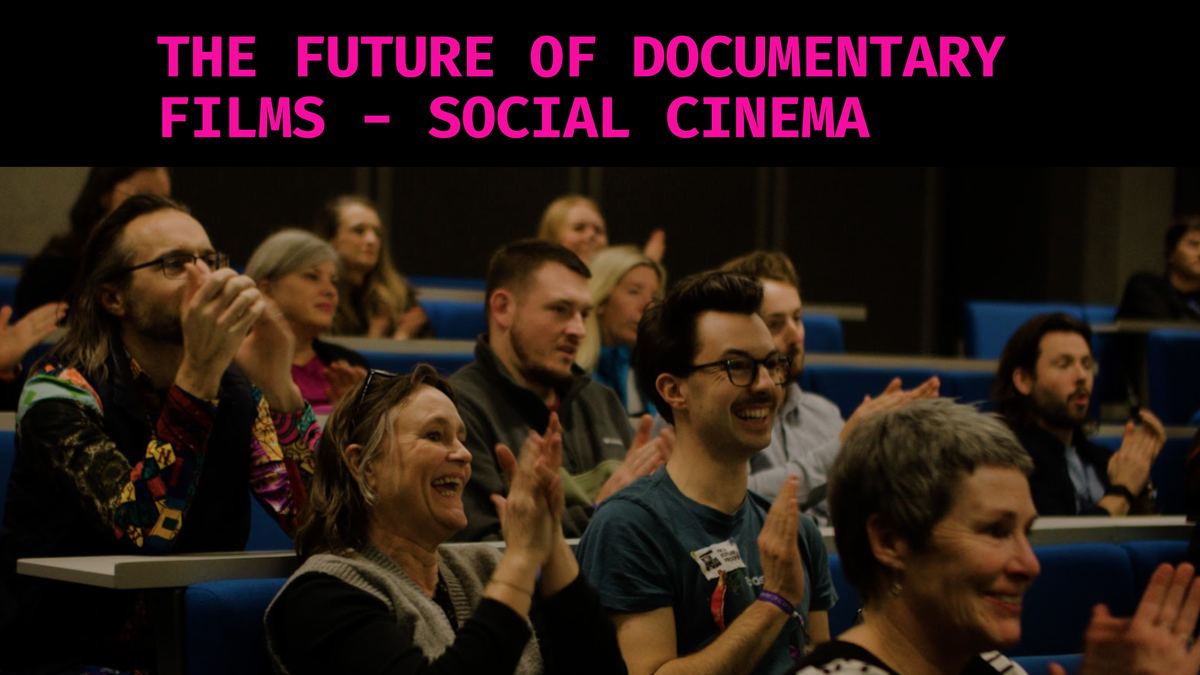
Documentary filmmaking is at a crossroads. For decades, we've mastered raising awareness about critical issues: from climate change to social justice, from environmental threats to global systemic problems. I've been a huge Stacey Dooley fan for years, and I love searching iPlayer for the next documentary to watch. But something is missing.
In my own experience, awareness without action just creates paralysis. We feel powerless - in a way, we're worse off because we now see the problem but don't know how to do anything about it. Or, as with so many environmental documentaries, we're simply told to shop better or sign a petition.
The question facing documentary makers today isn't whether they can make people care, but whether they can empower them to act.
Since working with Gavin and Heather at Re-Action and seeing how they chose to screen the ACTionism film through community screenings, I'm confident that the answer lies in social cinema.
The 99p Films Social Cinema Model
If you haven't heard of it, social cinema is a revolutionary approach that transforms documentary screenings from passive consumption into active community engagement. Our friends at 99p Films in Cornwall are pioneering this model, proving that how we screen documentaries can be as transformative as the films themselves.
Their approach goes far beyond traditional film screenings by incorporating mindful breathing, engaging discussions, and communal feasts. This four-stage process creates transformative experiences. The genius lies in their integration of the physical, emotional, intellectual, and social dimensions of human experience.
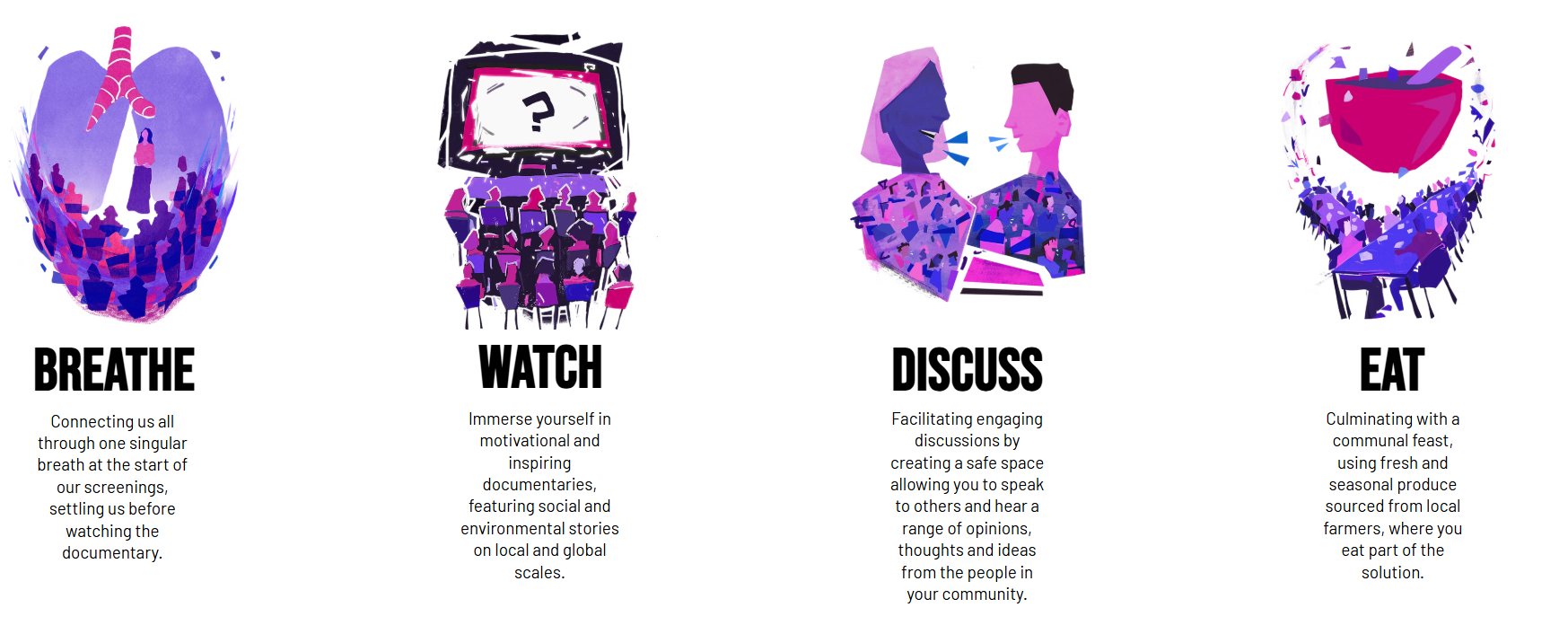
Their success is tangible: events consistently sell out across Cornwall. More importantly, their model shows how documentaries can become catalysts for genuine community action rather than mere sources of information.
ACTionism. Film: Case Study Experience
Take the documentary film ACTionism, created by Two Step Films and the Re-Action Collective as an example. The 30-minute film, made on a shoestring budget, follows Ellie Meredith's journey from climate anxiety to empowerment, demonstrating how collective action - not just individual effort - can lead to real change.
Since launching through community screenings, the ACTionism.film has generated over 100 screening requests globally, with 30 already screened. But the real measure of success isn't in the numbers - it's found in the discussions, connections and initiatives sparked in these communities.
This is documentary filmmaking designed for impact from the ground up. Rather than hoping viewers will somehow translate awareness into action, by sharing ACTionism at community screenings the conditions for collective engagement during the screening itself becomes the catalyst for people to start their own journeys like Ellies – from anxiety to collective action.
The challenge faced by documentary makers
Consider David Attenborough's recent documentary Ocean. By traditional measures, it's a success - beautiful cinematography, compelling storytelling, and widespread distribution. But imagine if it had been screened through the social cinema model: communities gathering to watch together, followed by discussions about local marine conservation efforts, ending with a feast featuring locally produced vegan ‘fishy’ alternatives to seafood.
Instead of viewers leaving with vague advice to "buy more sustainable seafood," they might exit with concrete plans for beach clean-ups, connections to local marine conservation groups, or commitments to support specific coastal restoration projects.
The Social Cinema Advantage for Filmmakers
It’s worth saying, this isn't just something to add to your documentary as an afterthought - ideally, it should be baked into the film's process – what are the actions that you want communities and viewers to take after watching your film – surely that’s why you’re making it in the first place?
If you’re a film-maker here are some ways I think that Social cinema offers documentary makers like you a number of crucial advantages:
1. Immediate Community Building: Rather than hoping individual viewers will somehow connect with others who share their concerns, social cinema creates those connections during the screening itself.
2. Localised Solutions: While documentaries often address global problems, social cinema discussions naturally focus on local manifestations and solutions. This makes collective action more tangible and achievable.
3. Sustained Engagement: Traditional documentary viewing is a one-time event. Social cinema creates ongoing relationships and commitments that extend far beyond the screening.
4. Enhanced Impact Measurement: Rather than relying on viewing figures or social media engagement, social cinema provides concrete metrics of impact—initiatives launched, connections made, commitments taken.
The ACTION: Film and distribute for ACTION, not just awareness
The success of ACTionism suggests we need to rethink how documentaries are conceived, produced, and distributed:
During Production: Consider from the outset how your work will translate into community action. Include local solutions, feature community organisers alongside experts, structure narratives to lead naturally to discussion and action.
During Distribution: Rather than pursuing the widest possible reach, prioritise deep community engagement. Work with local organisations, provide discussion guides and action resources.
During Exhibition: The screening becomes part of the film's impact strategy, not just its distribution. Think about venues, timing, facilitation, and follow-up activities as integral to your documentary's success.
The future of documentary impact
Social cinema represents more than just a new distribution model - it's a fundamental shift towards community-led power and collective action. For documentary makers committed to creating change, not just awareness, this approach offers a proven pathway from screens to community action.
The question isn't whether your documentary can make people care about an issue—it's whether it can empower them to do something about it. Social cinema provides the framework for that transformation, turning passive audiences into active communities and individual concern into collective action.
The future of documentary impact isn't just about reaching more people—it's about empowering communities to act together.
The tools exist. The model works. The communities are ready. The only question is: will documentary makers embrace the challenge of creating not just awareness, but action?


